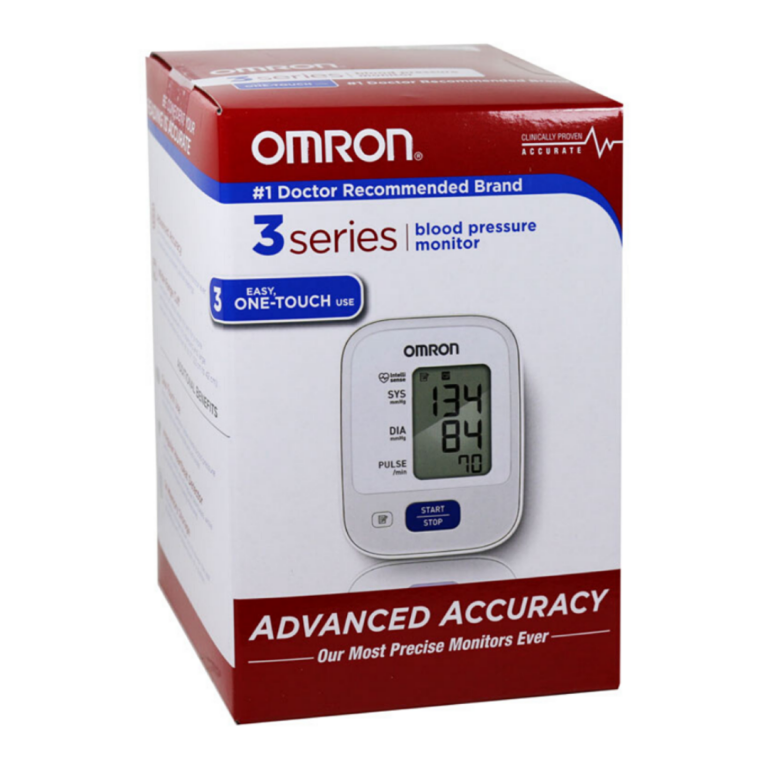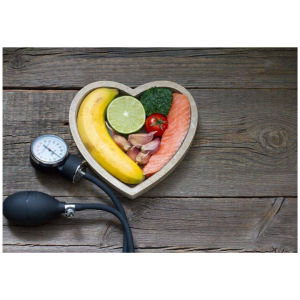
Very low or high blood pressure levels can cause severe conditions to the body and may lead to death if not detected and managed early.
Detecting and managing very low or high levels of blood pressure can help you enjoy living a healthy lifestyle. But first, we first need to find
out what this blood pressure is, right? Okay.
Blood pressure is the force of blood pushing against the walls of the blood vessels of your arteries. The results are given in two numbers. The
top or first number in a blood pressure reading is the systolic blood pressure which is the amount of pressure your heart generates when your
heart is contracting and pushing out blood. The reading for an adult is usually less than 120 for normal blood pressure. The other number is
the diastolic blood pressure. This is the pressure in your blood when the heart relaxes and fills with blood. For an adult, the normal diastolic
pressure reading is 80. Normal blood pressure is stated as 120/80mmHg.
The level of blood pressure fluctuates depending on what a person is doing such as what you eat and drink, body position, breathing rhythm,
stress level, physical condition, medications you take, and time of day. Blood pressure is usually lowest at night and rises sharply on waking.
Readings under 120/80 are optimal and those over 139/89 are high. A person should have the blood pressure monitored on a regular basis to
control it in case it rises or drops beyond normal readings.

High blood pressure, also known as hypertension or ‘the silent killer’ is a condition where your pressure is constantly higher than the
normal level, where the first number reading is 130 millimeters of mercury (mm Hg) or higher and the second number is 80 millimeters of
mercury (mm Hg) or higher e.g, 139/89mmHg. When the pressure increases and is not controlled, it may strain the blood vessel walls and
damages the vessels and organs especially the heart. When the first number, systolic, is higher than 130 but the second number is less than
80, this condition is referred to as isolated systolic hypertension. It occurs due to the age-related stiffening of the major arteries. This is the
most common form of hypertension in elderly people and can cause health problems like stroke.
There are two types of high blood pressure.
This is hypertension that develops over time with no apparent cause. You can have it and not know because it doesn’t have symptoms and so
you need to have constant check-ups and monitor your blood pressure levels frequently. It can begin at any age, especially middle age.
Some of the factors that play a role in your blood pressure slowly increasing include:
Unhealthy lifestyle habits. These include stress, being overweight, poor diet, lack of exercising and minimal physical activities.
Genes or Family History. If you inherited genetic abnormalities from your parents or have varying gene mutations then it can cause essential hypertension.
This is high blood pressure that can be caused by other medical conditions that affect your kidneys, arteries, heart or endocrine system. It is
common in younger people but has a potentially reversible cause. Some of the causes include:
Obstructive sleep apnea (OSA) - a condition in which breathing stops involuntarily for brief periods of time during sleep. It’s one of the main
causes.
Illegal drugs - these include alcohol, cigarettes, among others.
Adrenal gland problems - when these glands that produce steroid hormones have issues, they can cause hypertension.
Thyroid problems - when the gland on the bottom of your neck that regulates the body’s metabolism has problems, then that might cause a
person to have high blood pressure.
Kidney diseases
Congenital heart defects - if you were born with heart abnormalities, there’s a high chance of having hypertension.
Stage 1 hypertension is:
a systolic pressure of 130 to 139 mmHg, or
diastolic pressure of 80 to 89 mmHg
Stage 2 hypertension is:
systolic pressure higher than 140 mmHg, or
diastolic pressure higher than 90 mmHg

Hypotension occurs when the pressure of pushing blood in the artery is very low. A blood pressure reading lower than 90mmHg for the top
number (systolic) or 60 mmHg for the bottom number (diastolic) is generally considered low blood pressure.
When a person has abnormally low blood pressure hypotension, it can cause dizziness and fainting and to some extent, life-threatening.
It is important to find out what's causing your hypotension so that it can be treated in its early stages. Most doctors consider blood pressure
too low only if it causes symptoms.
Symptoms of low blood pressure are quite a number. One of the signs that can be an indication that you have hypotension is dizziness or
lightheadedness. This might happen because of mild dehydration from too much time in the sun or a hot tub. Fever, vomiting, severe
diarrhea, overuse of diuretics and strenuous exercise can lead to dehydration as well. Other symptoms include: Fainting (syncope), Blurred
vision, Nausea, Fatigue, Lack of concentration, Shock, Endocrine problems which include thyroid conditions such as parathyroid disease,
adrenal insufficiency (Addison's disease), low blood sugar (hypoglycemia) and, in a few instances, diabetes can trigger low blood
pressure.
Extreme hypotension can result in this life-threatening condition. Some of the signs and symptoms include; Confusion especially in older
people, cold, clammy, pale skin, rapid shallow breathing, weak and rapid pulse and indications of shock.
Keep a record of the current activity taking place when it happens and follow up with your doctor if it persists.
Blood loss. Losing a lot of blood, such as from a major injury or internal bleeding, reduces the amount of blood in your body, leading to a
severe drop in blood pressure.
Severe infection (septicemia). When an infection in the body enters the bloodstream, it can lead to a life-threatening drop in blood pressure
called septic shock.
Severe allergic reaction (anaphylaxis). Common triggers of this severe and potentially life-threatening reaction include foods, certain
medications, insect venoms, and latex. Anaphylaxis can cause breathing problems, hives, itching, a swollen throat and a dangerous drop in
blood pressure.
Lack of nutrients in your diet. A lack of vitamins B-12 and folate can keep your body from producing enough red blood cells (anemia),
causing low blood pressure.
Dehydration. Low amounts of water in your body can cause hypotension.
Some medications can also cause low blood pressure.
Low blood pressure (hypotension) can be broken down into categories, depending on the causes and other factors. Some types of low blood
pressure include:
drop after standing for long periods, mostly affects young adults and children. It seems to occur because of a miscommunication
between the heart and the brain.
down. It is especially common in older adults, but it also affects young, otherwise healthy people who stand up suddenly after sitting
with their legs crossed for long periods or after squatting for a time.
body increases your heart rate and constricts certain blood vessels to help maintain normal blood pressure. But in some people
especially those with high blood pressure or autonomic nervous system disorders, these mechanisms fail, leading to dizziness,
faintness, and falls. Lowering the dose of blood pressure drugs and eating small, low-carbohydrate meals might help reduce symptoms.
constricting blood vessels, thereby ensuring that enough blood returns to your brain.
system damage. This rare disorder causes progressive damage to the autonomic nervous system, which controls involuntary functions
such as blood pressure, heart rate, breathing, and digestion. It's associated with having very high blood pressure while lying down.

Well, this can be accomplished if you work on the following;
Being overweight adds to your risk of high blood pressure. Exercise every day moderately. Set some goals so you
can exercise safely and work your way up to exercising at least 30 minutes a day most days of the week. Check with your doctor before
starting an exercise plan if you have any health problems that are not being treated.
A diet rich in fruits, vegetables, whole grains, and low-fat dairy products may help to lower blood pressure. Also, cut
down on salt. As you get older, the body and blood pressure become more sensitive to salt (sodium), so you may need to watch how much salt
is in your diet.

Drinking alcohol can affect your blood pressure. Men should not have more than two drinks a day and women no more
than once a day to lower their risk of high blood pressure.
Smoking increases your risk of high blood pressure, heart disease, stroke, and other health problems. If you smoke, quit. You
are never too old to quit, and the health benefits of quitting can be seen at any age.
If you have trouble breathing at night or snoring, it may be an indication of obstructive sleep apnea
(OSA). Get a good night's sleep by seeking treatment from your doctor for diagnosing breathing problems. You can also reach out to us and we can advise on the best treatment alternative for sleep apnea.
Relaxing and coping with problems can help lower high blood pressure.
You can take medication to manage your blood pressure but it can’t be cured. You need to follow up with your doctor for evaluation and
decisions on maintaining balanced blood pressure levels.
Please remember these:
- Ensure your back is resting against something and always sit with your feet uncrossed and on the floor.
- Get up slowly from a seated or lying position and stand for a bit before walking.
- Be in a relaxed position before measuring your blood pressure.
- 30 minutes before you check your blood pressure levels, avoid doing exercises, smoking, or taking caffeine.
Before visiting the doctor, you can keep a record of your blood pressure readings and observe symptoms when pressure is very low or high.
This will help the doctor diagnose the problem and give you the right treatment.
One of the most preferred BP monitor brands is the Omron series which has an extensive variety that fits the specifications of the user. The
Omron 3 series blood pressure monitor is very common in the market because it’s affordable and more so, is accurate, has 14-reading
memory and automatic, hence easy to use.
Live a healthy lifestyle, monitor your pressure levels on a frequent basis and visit the doctor if you can track abnormality in your levels. The good news is, it can be controlled.
As the American comedian Richard Claxton, popularly known as Dick Gregory, once said, "People with high blood pressure,
diabetes - those are conditions brought about by lifestyle. If you change the lifestyle, those conditions will leave."
https://en.wikipedia.org/wiki/Blood_pressure
Share this information with other people and help improve someone’s lifestyle.
We got you covered!





